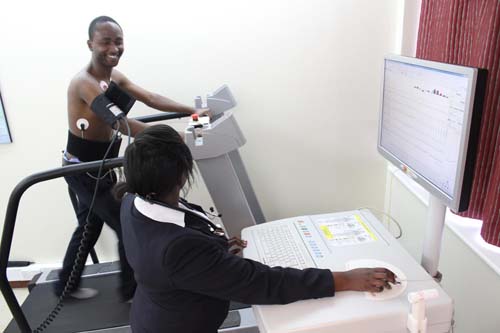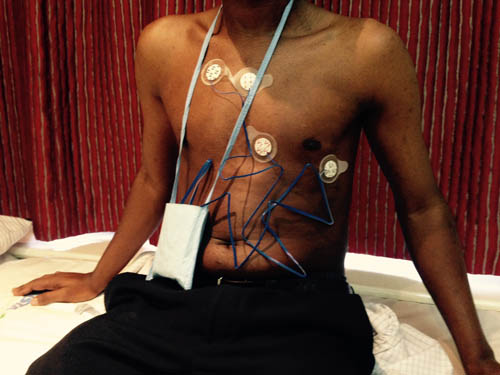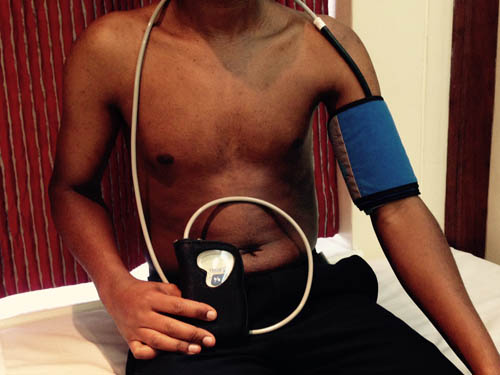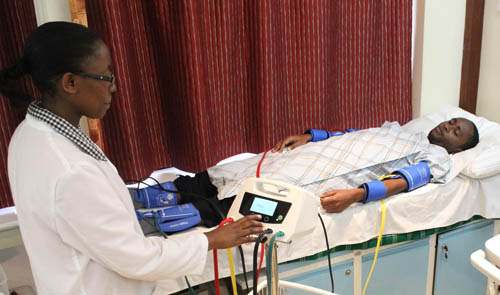Electrocardiogram (ECG)
This is a test that measures the electrical activity of the heart at rest. This
gives valuable information about the past and present condition of the heart.

Excercise Stress Test
This test records the electrical activity of your heart during physical exercise. 10 electrodes are stuck on the chest and connected to the E.C.G. machine.
This test is used to find out if the patient has narrowed arteries of the heart, but also gives important information regarding the rhythm, and the heart rate and blood pressure response during exercise.

Holter Monitoring
A Holter monitor is a small portable device that records the (ECG) continuously for 24
to 48 hours or longer depending on the monitor used. It has wires with electrodes that
attach to your skin. It is used to diagnose heart rhythm abnormalities.

Ambulatory Blood Pressure Monitoring
Ambulatory Blood Pressure Monitoring (ABPM) is used to measure blood pressure for 24 hours
during normal daily activities. It uses a small digital blood pressure machine that is attached
to a belt around your body and connected to a cuff around your upper arm.

Arterial Ankle Brachial Index (ABI)
This test is used to diagnose abnormalities of blood circulation to the arms and legs that commonly
occurs in people who have high blood pressure, diabetes or smoke tobacco.

Transthoracic Echocardiography (TTE)
This is essentially an ultrasound scan of the heart and gives information about the size of the heart
chambers, their function and the function of the heart valves.
Transoesophageal Echocardiography (TOE/TEE)
This is an ultrasound scan of the heart using a special probe which is inserted into the oesophagus
(food pipe) while the patient is under sedation. This test gives extremely clear pictures of the structure
of the heart and any abnormalities within the chambers such as blood clots and "holes in the heart"
Stress Echocardiography
The movement of the heart muscle is monitored by echocardiogram and ECG at rest and immediately after exercise.
In patients unable to exercise, a medication (Dobutamine) is given by continuos injection to increase the heart
rate and mimic exercise. Abnormalities of the movement of the heart muscle indicates poor blood supply to that
part of the heart.
Venous Doppler Studies
This test is used to look at the blood flow through veins in the arms and legs and is useful for the diagnosis
of blood clots (DVT) and in determining the severity and treatment required for varicose veins.
Venous Foam Sclerotherapy
Smaller varicose veins that may be unsightly can be shrunk by special foam injections carried out under local
anaesthetic.
Sleep Apnoea Study
Some people, especially those who snore a lot, drop their oxygen levels in the blood to very low levels
during the night. These individuals have a higher risk of heart disease. People who have congestive cardiac
failure also get this condition.
Accurate diagnosis enables appropriate treatment and prevents further
problems. The test is done by a small machine that monitors the blood oxygen level and the breathing pattern.
Pacemaker/ICD/CRT Checking and Programming
All patients with these devices require regular checks of the battery and wires and occasionaly make
adjustments to ensure that they are receiving the appropriate treatment.




